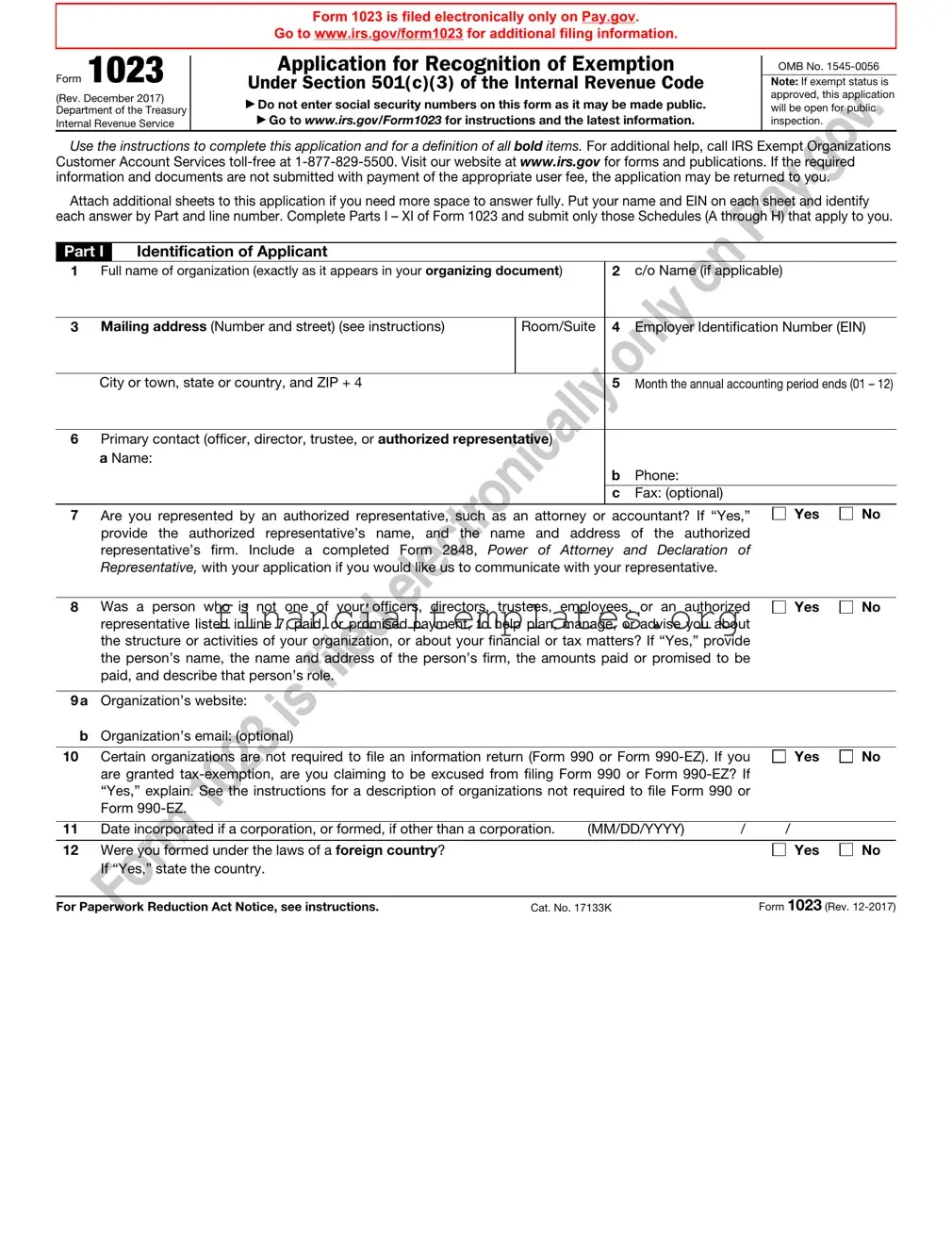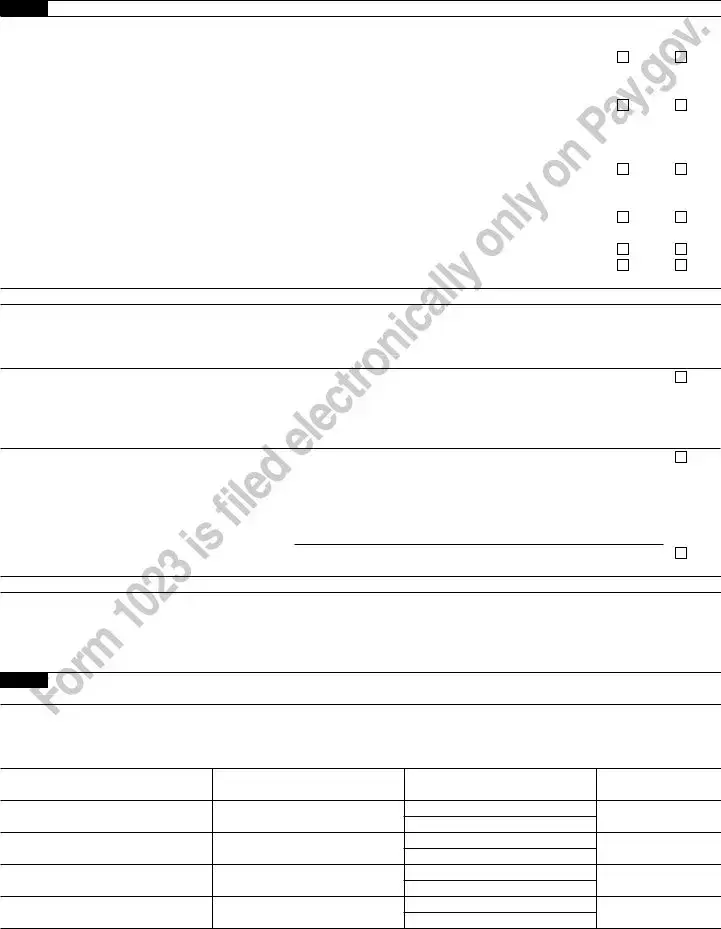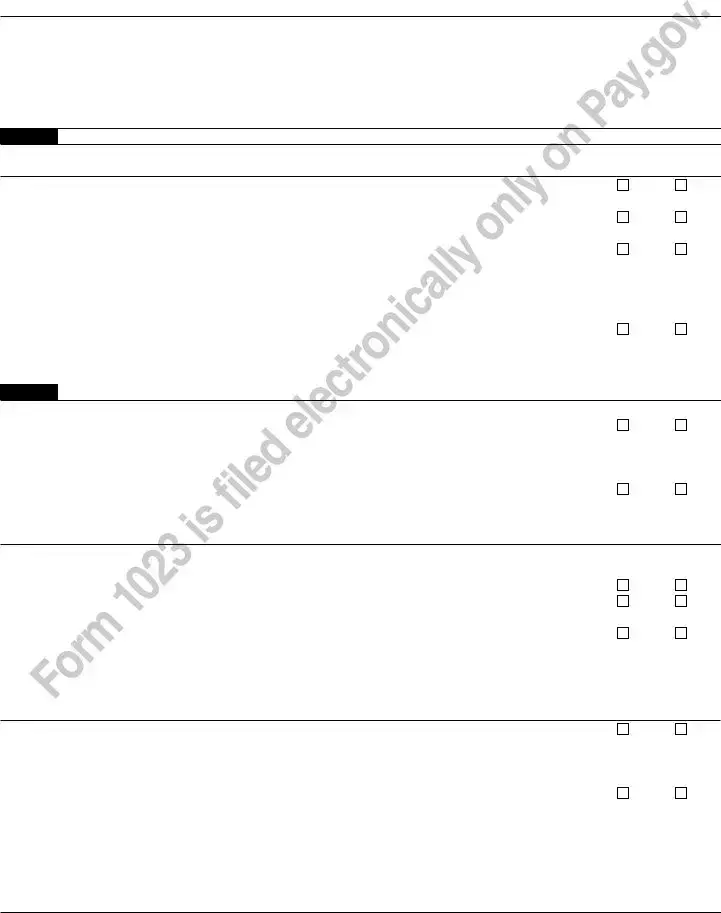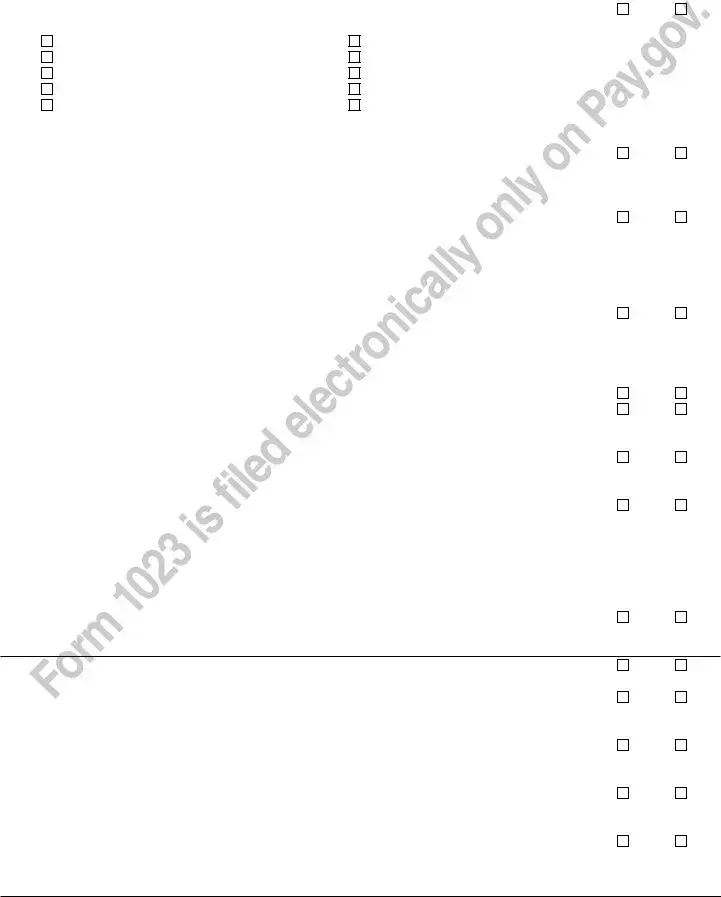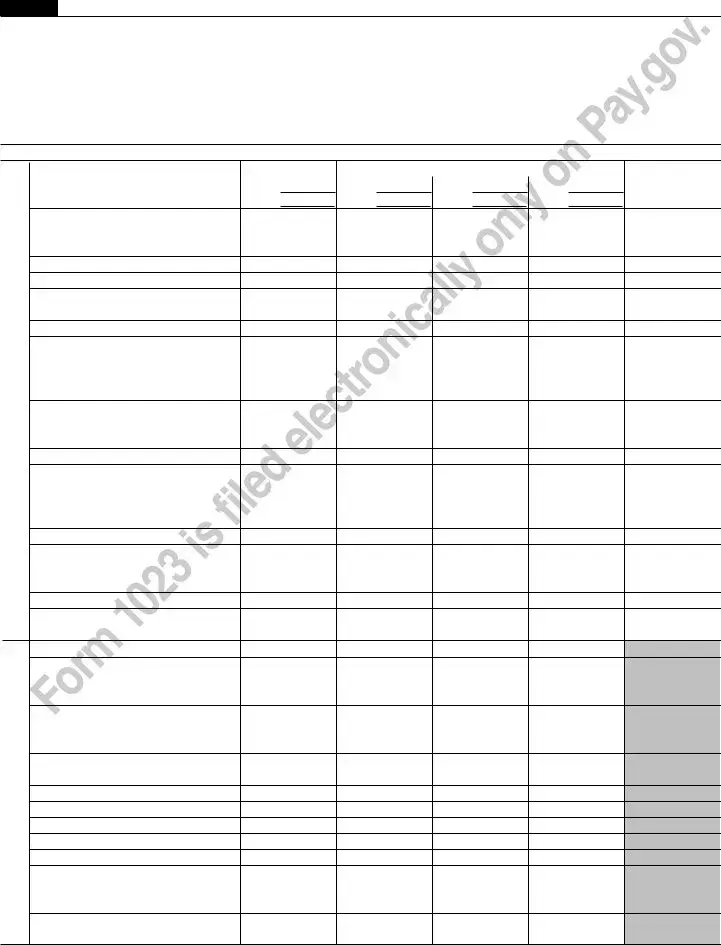Form 1023 (Rev. 12-2017) |
Name: |
EIN: |
Page 2 |
Part II Organizational Structure
You must be a corporation (including a limited liability company), an unincorporated association, or a trust to be tax exempt.
See instructions. DO NOT file this form unless you can check “Yes” on lines 1, 2, 3, or 4.
1 |
Are you a corporation? If “Yes,” attach a copy of your articles of incorporation showing certification of |
Yes |
No |
|
|
filing with the appropriate state agency. Include copies of any amendments to your articles and be sure |
|
|
|
|
they also show state filing certification. |
|
|
|
|
|
|
|
2 |
Are you a limited liability company (LLC)? If “Yes,” attach a copy of your articles of organization showing |
Yes |
No |
|
|
certification of filing with the appropriate state agency. Also, if you adopted an operating agreement, attach |
|
|
|
|
a copy. Include copies of any amendments to your articles and be sure they show state filing certification. |
|
|
|
|
Refer to the instructions for circumstances when an LLC should not file its own exemption application. |
|
|
|
|
|
|
|
3 |
Are you an unincorporated association? If “Yes,” attach a copy of your articles of association, |
Yes |
No |
|
|
constitution, or other similar organizing document that is dated and includes at least two signatures. |
|
|
|
|
Include signed and dated copies of any amendments. |
|
|
|
|
|
|
|
|
4a |
Are you a trust? If “Yes,” attach a signed and dated copy of your trust agreement. Include signed and |
Yes |
No |
|
|
dated copies of any amendments. |
|
|
|
b |
Have you been funded? If “No,” explain how you are formed without anything of value placed in trust. |
Yes |
No |
|
5 |
Have you adopted bylaws? If “Yes,” attach a current copy showing date of adoption. If “No,” explain |
Yes |
No |
|
|
how your officers, directors, or trustees are selected. |
|
|
Part III Required Provisions in Your Organizing Document
The following questions are designed to ensure that when you file this application, your organizing document contains the required provisions to meet the organizational test under section 501(c)(3). Unless you can check the boxes in both lines 1 and 2, your organizing document does not meet the organizational test. DO NOT file this application until you have amended your organizing document. Submit your original and amended organizing documents (showing state filing certification if you are a corporation or an LLC) with your application.
1Section 501(c)(3) requires that your organizing document state your exempt purpose(s), such as charitable, religious, educational, and/or scientific purposes. Check the box to confirm that your organizing document meets this requirement. Describe specifically where your organizing document meets this requirement, such as a reference to a particular article or section in your organizing document. Refer to the instructions for exempt purpose language.
Location of Purpose Clause (Page, Article, and Paragraph):
2 a Section 501(c)(3) requires that upon dissolution of your organization, your remaining assets must be used exclusively for exempt purposes, such as charitable, religious, educational, and/or scientific purposes. Check the box on line 2a to confirm that your organizing document meets this requirement by express provision for the distribution of assets upon dissolution. If you rely on state law for your dissolution provision, do not check the box on line 2a and go to line 2c.
bIf you checked the box on line 2a, specify the location of your dissolution clause (Page, Article, and Paragraph). Do not complete line 2c if you checked box 2a.
c See the instructions for information about the operation of state law in your particular state. Check this box if you rely on operation of state law for your dissolution provision and indicate the state:
Part IV |
Narrative Description of Your Activities |
Using an attachment, describe your past, present, and planned activities in a narrative. If you believe that you have already provided some of this information in response to other parts of this application, you may summarize that information here and refer to the specific parts of the application for supporting details. You may also attach representative copies of newsletters, brochures, or similar documents for supporting details to this narrative. Remember that if this application is approved, it will be open for public inspection. Therefore, your narrative description of activities should be thorough and accurate. Refer to the instructions for information that must be included in your description.
Part V Compensation and Other Financial Arrangements With Your Officers, Directors, Trustees, Employees, and Independent Contractors
1a List the names, titles, and mailing addresses of all of your officers, directors, and trustees. For each person listed, state their total annual compensation, or proposed compensation, for all services to the organization, whether as an officer, employee, or other position. Use actual figures, if available. Enter “none” if no compensation is or will be paid. If additional space is needed, attach a separate sheet. Refer to the instructions for information on what to include as compensation.
